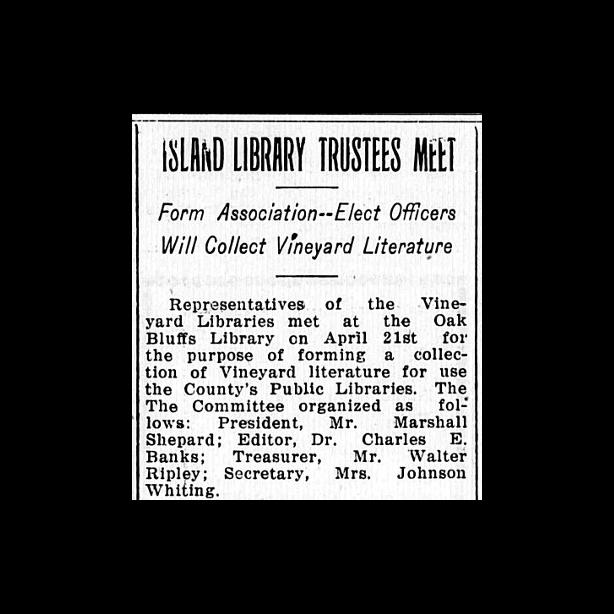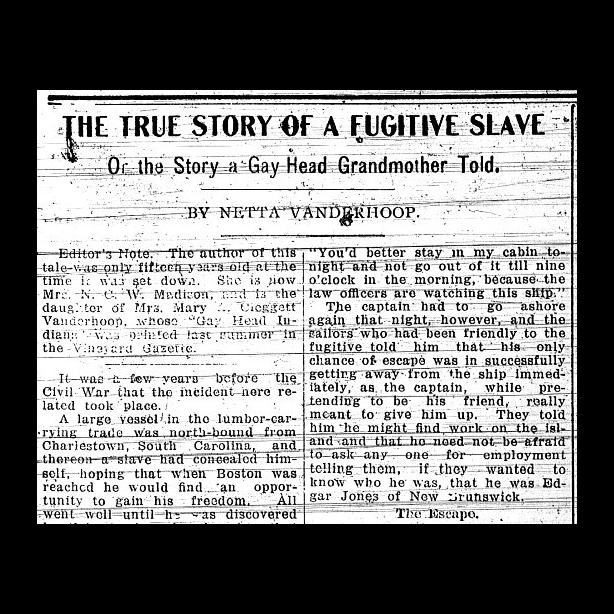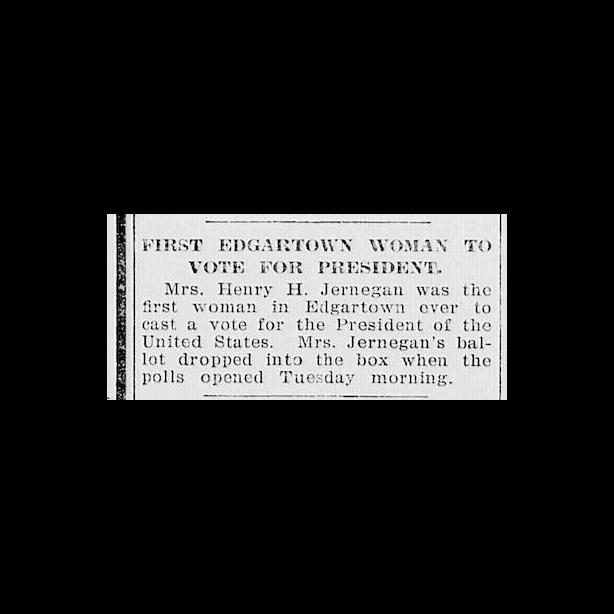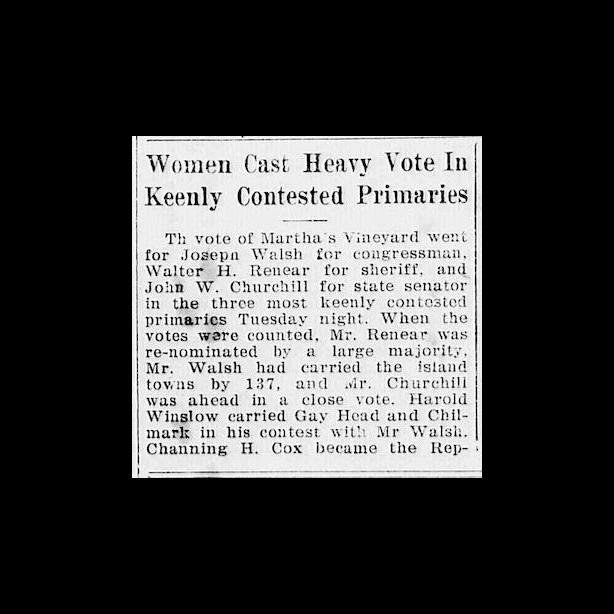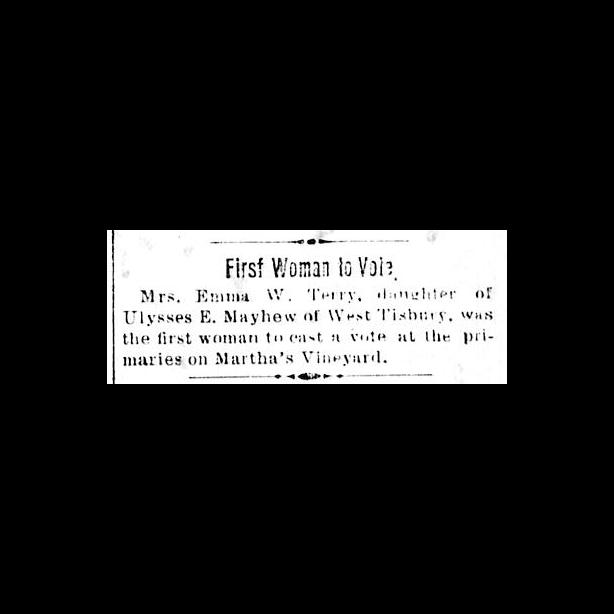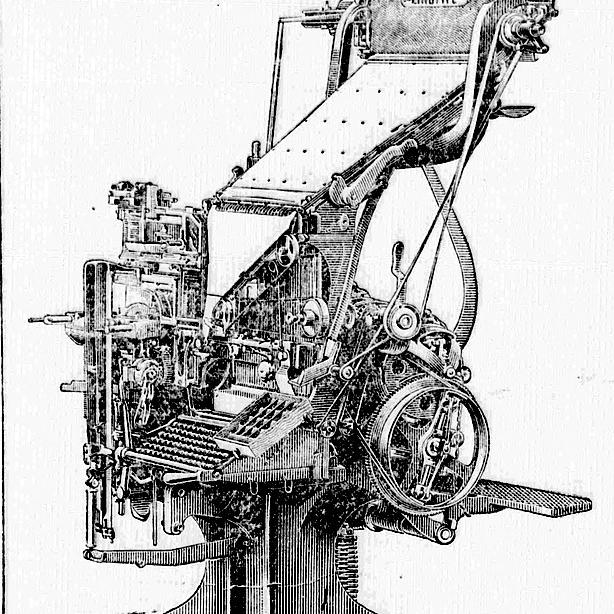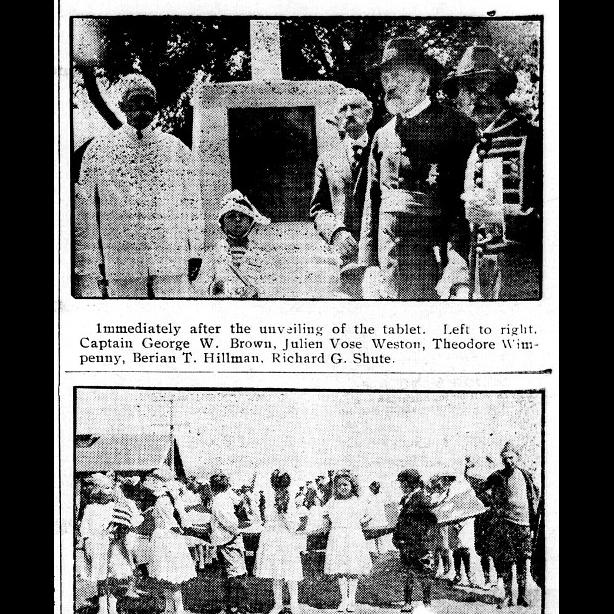Time Machine Terms
April 28, 1921
Island Library Trustees Meet
April 28, 1921
Vineyard Ghost Stories: The Crying Swamp
Near the north shore of the island just inshore from Cedar Tree Neck is what is left of the Crying Swamp. Here today is a small cranberry bog, surrounded by swamp bushes just like a hundred similar spots on the Vineyard.
February 24, 1921
Gazette Has New Press, Will Soon Move Office
A new printing press is being installed in a new Gazette office. In a few weeks the Gazette will change its headquarters from the old office at the corner of Main and Water streets to the building on Summer Street, owned by Mrs. Horace Vincent and formerly occupied as a Jewelry Store.
February 3, 1921
The True Story of a Fugitive Slave: Or the Story a Gay Head Grandmother Told
It was a few years before the Civil War that the incident here related took place.
A large vessel in the lumbor-carrying trade was north-bound from Charlestown, South Carolina, and thereon a slave had concealed himself, hoping that when Boston was reached he would find an opportunity to gain his freedom.
January 27, 1921
When the Island Echoed to the Locomotive’s Whistle
These were the last survivors of the Vineyard’s most ambitious project. Of course the right of way is an intangible thing at best to any but the owners. And it was sold. As for the streak of rust. Well, a spirit of economy which never characterized the scheme in its heyday finally removed the rails of the first and last railroad on the island.
November 4, 1920
First Edgartown Woman to Vote for President
Mrs. Henry H. Jernegan was the first woman in Edgartown ever to cast a vote for the President of the United State. Mrs. Jernegan’s ballot dropped into the box when the polls opened Tuesday morning.
September 9, 1920
Women Cast Heavy In Keenly Contested Primaries
The vote of Martha’s Vineyard went for Joseph Walsh for congressman, Walter H. Renear for sheriff, and John W. Churchill for state senator in the three most keenly contested primaries Tuesday night. When the votes were counted, Mr. Renear was re-nominated by a large majority, Mr. Walsh had carried the island towns by 137, and Mr. Churchill was ahead in a close vote. Harold Winslow carried Gay Head and Chilmark in his contest with Mr. Walsh. Channing H. Cox became the Republican nominee with the island’s endorsement.
September 9, 1920
First Woman to Vote
Mrs. Emma W. Terry, daughter of Ulysses E. Mayhew of West Tisbury, was the first woman to cast a vote at the primaries on Martha’s Vineyard.
July 22, 1920
First Linotype Machine on the Island
The linotype machine ranks with the invention of the printing press itself in importance to the printer of today. And now the Vineyard Gazette has bridged the gap from the old era to the new.

